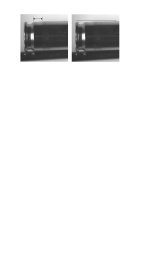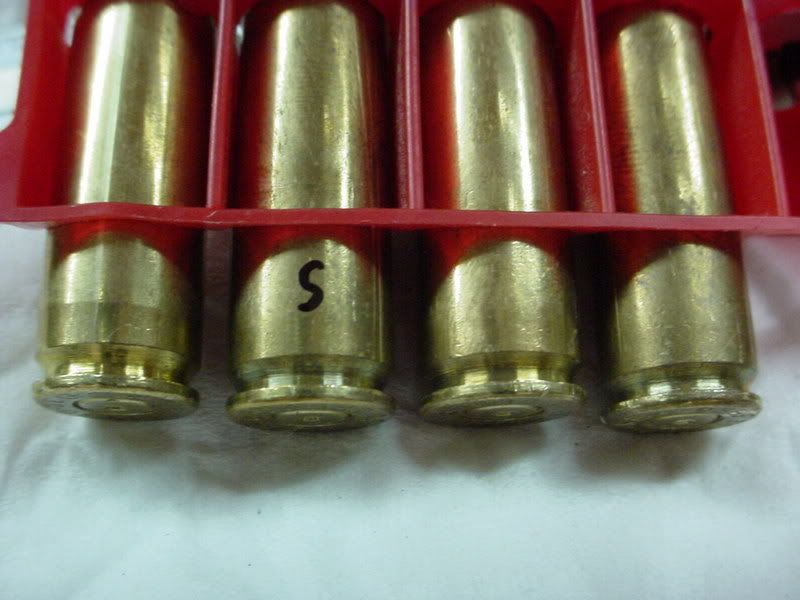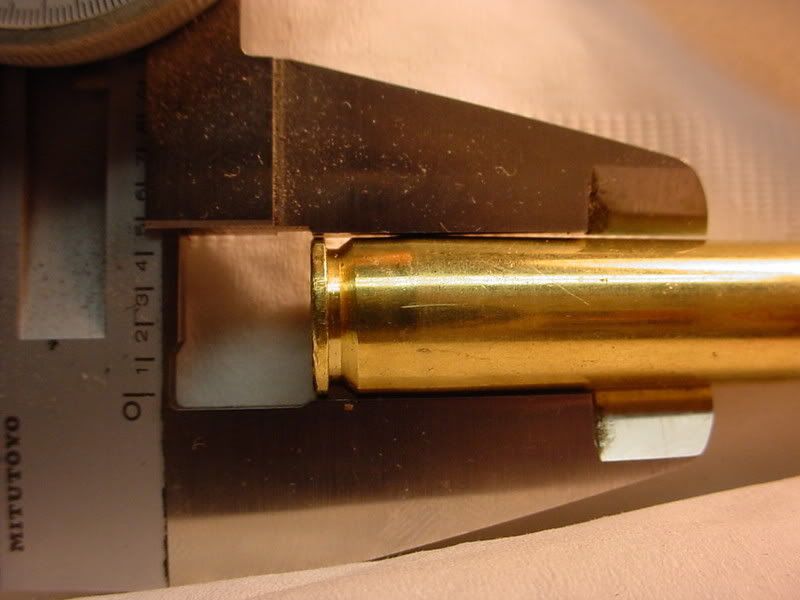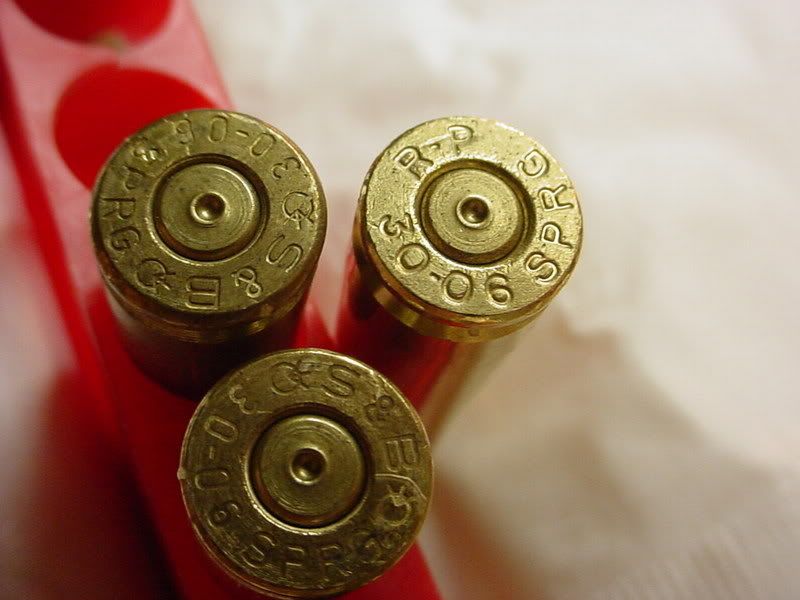First post here… and I'm already looking for advice . I’m rapidly learning about internal ballistics and chamber design and have found the study fascinating. I haven’t learned enough yet though to know what I’m looking at on this though... I have a new DPMS, LR308T (.308 semi-auto AR) that’s chamber appears to be stretching the case head excessively (lengthwise, as if it was excessively headspaced) but it’s only on about 20-40% of the case head circumference (only on one side, if you will). Many cases are to the point that I wouldn’t dare to reuse the once fired brass out of fear of it separating.
. I’m rapidly learning about internal ballistics and chamber design and have found the study fascinating. I haven’t learned enough yet though to know what I’m looking at on this though... I have a new DPMS, LR308T (.308 semi-auto AR) that’s chamber appears to be stretching the case head excessively (lengthwise, as if it was excessively headspaced) but it’s only on about 20-40% of the case head circumference (only on one side, if you will). Many cases are to the point that I wouldn’t dare to reuse the once fired brass out of fear of it separating.
The chamber checked out fine with a .308 NO-GO gauge, even though the barrel is stamped 7.62x51. I called DPMS and they said that it is chambered in .308. The fella I talked to there didn’t have a real good answer to my question why they stamped them 7.62x51 then, but anyway…
Another odd thing is that it doesn’t do it on every case (using the same ammo) and some brands of brass seem to do it more frequently. Winchester seems to be the worst, Remington second, and Federal the least (roughly 70%, 50%, and 30% respectively show the flow issue). It is also beginning to look like it does it in the same spot in the chamber (the stretched side seems to be in the same relative circumferential position in respect to the extractor mark on the case) but I’m not 100% sure on that yet though. I need to look at some more cases to confirm that.
I’m wondering if the chamber isn’t square to the bore, or the if chamber isn’t square to the bolt (i.e. the barrel extension is out of square to the bore??). Does that make any sense? Would an overly rough or overly smooth, or variably rough and smooth, chamber do that? When I look into the chamber, the walls look “normal” but it does appear to be a little rough in the shoulder/wall junction area (can see one distinct tool-mark ridge at the wall/shoulder junction on one side – it is enough to leave an impression of it on each case, maybe .002” deep). Is it just a peculiarity with these rifles? Is it a consequence of the variable cartridge headspace and/or brass hardness in different brands of ammo/brass?
It is worth noting that the rifle shoots ½ MOA and better when fed good ammo and loaded single load by hand. It has also grouped well with 150gr, 175gr and 180gr fodder so far. The rifle was also exhibiting signs of being overgassed when I first got it – failure to extract and locking back on an empty mag, ripping the rim hard via the extractor, ejecting at 1 o’clock, etc. The cases didn’t exhibit any signs of high pressure (measured or visually) and didn't fit hard into the chamber. An adjustable gas block took care of all of those symptoms though. Anyone have any thoughts on what’s causing the odd case head stretch?
The chamber checked out fine with a .308 NO-GO gauge, even though the barrel is stamped 7.62x51. I called DPMS and they said that it is chambered in .308. The fella I talked to there didn’t have a real good answer to my question why they stamped them 7.62x51 then, but anyway…
Another odd thing is that it doesn’t do it on every case (using the same ammo) and some brands of brass seem to do it more frequently. Winchester seems to be the worst, Remington second, and Federal the least (roughly 70%, 50%, and 30% respectively show the flow issue). It is also beginning to look like it does it in the same spot in the chamber (the stretched side seems to be in the same relative circumferential position in respect to the extractor mark on the case) but I’m not 100% sure on that yet though. I need to look at some more cases to confirm that.
I’m wondering if the chamber isn’t square to the bore, or the if chamber isn’t square to the bolt (i.e. the barrel extension is out of square to the bore??). Does that make any sense? Would an overly rough or overly smooth, or variably rough and smooth, chamber do that? When I look into the chamber, the walls look “normal” but it does appear to be a little rough in the shoulder/wall junction area (can see one distinct tool-mark ridge at the wall/shoulder junction on one side – it is enough to leave an impression of it on each case, maybe .002” deep). Is it just a peculiarity with these rifles? Is it a consequence of the variable cartridge headspace and/or brass hardness in different brands of ammo/brass?
It is worth noting that the rifle shoots ½ MOA and better when fed good ammo and loaded single load by hand. It has also grouped well with 150gr, 175gr and 180gr fodder so far. The rifle was also exhibiting signs of being overgassed when I first got it – failure to extract and locking back on an empty mag, ripping the rim hard via the extractor, ejecting at 1 o’clock, etc. The cases didn’t exhibit any signs of high pressure (measured or visually) and didn't fit hard into the chamber. An adjustable gas block took care of all of those symptoms though. Anyone have any thoughts on what’s causing the odd case head stretch?







